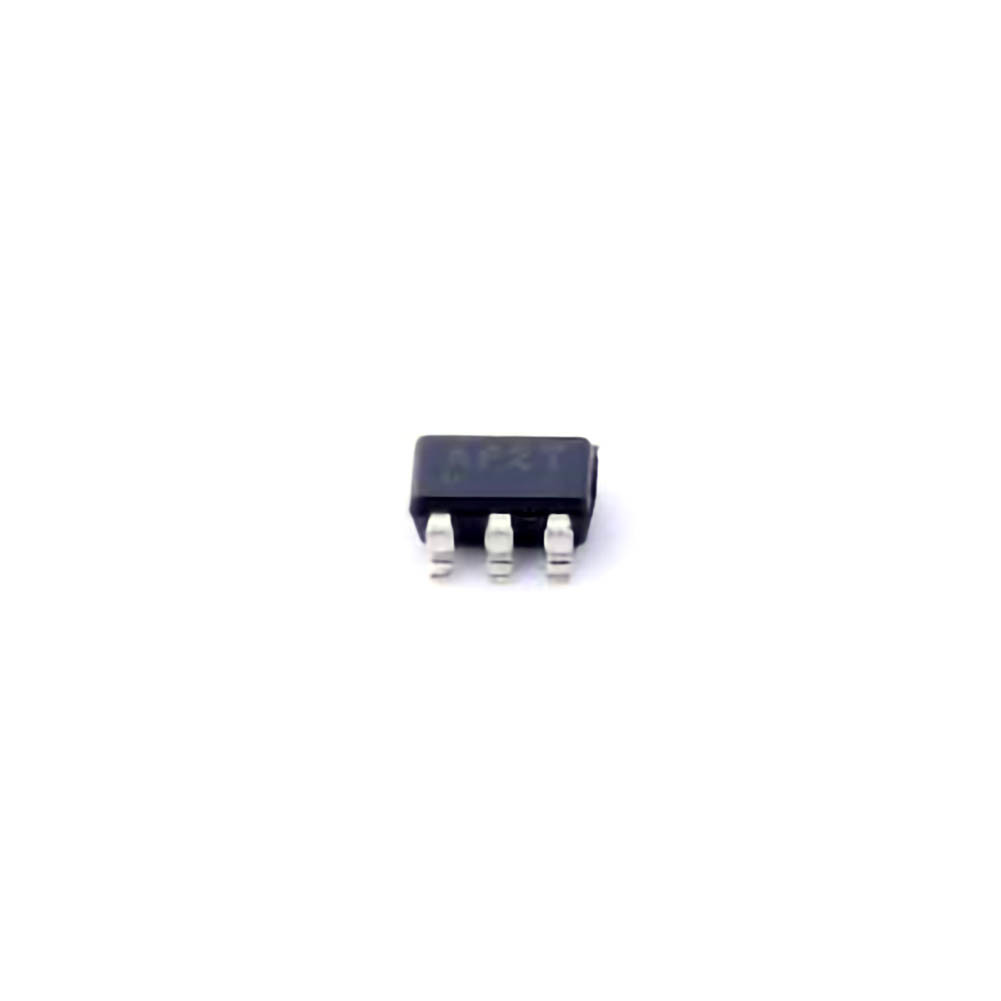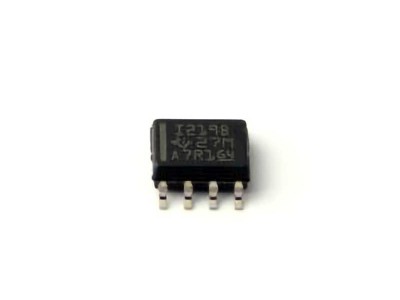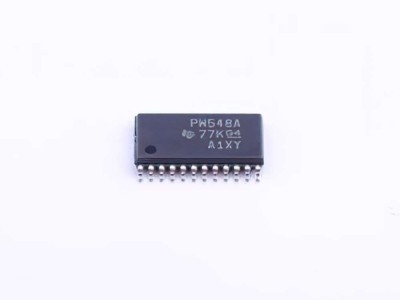
The MCP4725 Digital-to-Analog Converter (DAC) is an essential component for applications requiring high-precision analog signals. This article explores its features, benefits, and practical applications in various industries, focusing on how it enhances signal output accuracy in electronics and embedded systems.
MCP4725, Digital-to-Analog Converter, DAC, precision signal output, high-accuracy applications, embedded systems, electronics, signal processing, analog signal, microcontroller, I2C interface
Introduction to the MCP4725 Digital-to-Analog Converter (DAC)
In the ever-evolving world of electronics, signal conversion plays a pivotal role in translating digital data into usable analog signals. Whether in communication systems, industrial equipment, or consumer electronics, precision in signal output is crucial for reliable system performance. One such innovative solution for achieving high-precision analog output is the MCP4725 Digital-to-Analog Converter (DAC) from Microchip Technology.
The MCP4725 is a high-performance, low- Power , and compact DAC that provides excellent precision when converting digital signals into analog waveforms. Thanks to its I2C interface, it offers straightforward integration with various microcontrollers and embedded systems, making it a popular choice for engineers and developers aiming to enhance the accuracy of their systems.
In this article, we will delve into the features, advantages, and practical uses of the MCP4725 DAC, especially in applications that demand highly precise analog signal output.
Understanding the MCP4725 DAC: Key Features
The MCP4725 DAC stands out in the world of embedded systems due to its impressive set of features that combine ease of use with high precision:
12-Bit Resolution: The MCP4725 offers 12-bit resolution, providing 4096 discrete output levels. This ensures smooth and accurate transitions between digital values, making it ideal for applications requiring high precision in signal output.
I2C Interface: With an I2C interface, the MCP4725 can be control LED by any microcontroller or processor that supports I2C communication. This reduces the complexity of system design by allowing easy integration into existing circuits, enabling fast and efficient communication between the DAC and control units.
Low Power Consumption: The MCP4725 is designed for low-power operation, which is crucial for battery-powered devices or applications where energy efficiency is important. It can operate on a voltage range of 2.7V to 5.5V, making it compatible with various power systems.
Built-in EEPROM Memory : One of the standout features of the MCP4725 is its on-chip EEPROM memory, which allows for storing the output voltage value even when the system is powered off. This is particularly useful for applications where a specific output value must be restored after a power cycle.
Precision Voltage Output: The device can provide highly accurate analog voltage levels with minimal error. This makes the MCP4725 an ideal candidate for applications in calibration, testing, and signal generation, where maintaining signal integrity is paramount.
How the MCP4725 Works
The MCP4725 works by taking a 12-bit digital input signal from a microcontroller via the I2C interface and converting it into a corresponding analog voltage output. The digital signal is mapped to one of the 4096 possible output voltage levels, each corresponding to a specific point on the DAC's output range.
When a command is sent to the MCP4725, the device uses its internal resistor ladder to produce a precise output voltage. This output voltage can be used for driving analog circuits, actuators, or signal processing systems that require an analog input. The addition of the EEPROM memory allows the device to store the last output value, ensuring a seamless transition even after power is restored.
Why Choose the MCP4725?
The MCP4725 is ideal for applications where precise signal conversion is necessary. The reasons why engineers opt for the MCP4725 include:
Compact and Efficient: With its small package size and low power consumption, the MCP4725 is perfect for space-constrained designs and battery-operated applications.
Ease of Integration: The I2C interface makes it easy to integrate with most microcontrollers and embedded systems. This simplicity reduces development time and minimizes the risk of errors in system design.
Consistency and Reliability: The high accuracy and stability of the output signal ensure reliable performance, making the MCP4725 a trusted choice for critical applications in various industries.
Applications of the MCP4725 DAC
The MCP4725’s high-resolution output and ease of integration make it suitable for a wide variety of applications. Some of the most common uses include:
Signal Generation: The MCP4725 can generate stable and precise analog signals for use in testing and measurement equipment.
Audio and Music Systems: In audio applications, the MCP4725 can be used to convert digital audio data into high-quality analog signals for amplification or speaker output.
Control Systems: Many embedded control systems require precise analog control signals. The MCP4725 is a perfect solution for providing high-accuracy voltage levels to actuators, motors, or other control elements.
Instrumentation and Calibration: In precision instruments or calibration systems, the MCP4725’s accurate analog output is essential for ensuring correct measurement and calibration of other devices.
Leveraging the MCP4725 for Precision Signal Output in Real-World Applications
While the theoretical aspects of the MCP4725 DAC are compelling, its true power lies in real-world applications. In this section, we will explore some of the key industries and scenarios where the MCP4725 shines, as well as how to make the most of its features for optimal precision signal output.
1. Industrial Automation and Control Systems
In industrial automation, systems often require precise control of physical devices, such as motors, actuators, and sensors. The MCP4725 is an excellent choice for generating the necessary analog control signals. With its ability to produce highly accurate voltage levels and its I2C interface, engineers can easily integrate it into automation systems powered by microcontrollers or PLCs.
For example, in a process control system, the MCP4725 can be used to adjust the speed of a motor by providing a precise analog voltage to the motor driver. The ability to store and recall the last output value via the built-in EEPROM is especially useful in these scenarios, as it ensures that the motor or actuator starts at the correct position or speed after a power cycle.
2. Audio and Signal Processing Applications
One of the most demanding areas for high-precision signal output is in audio applications. The MCP4725’s 12-bit resolution and stable analog output make it an excellent choice for converting digital audio signals to analog form. Whether used in audio signal generators, digital synthesizers, or audio amplifiers, the MCP4725 provides a clean and accurate output.
For instance, in an audio synthesizer, the MCP4725 can convert digital control signals into analog waveforms that are used to drive speakers or other audio output devices. This ensures that the audio signal remains faithful to its digital counterpart, delivering high-fidelity sound with minimal distortion.
3. Precision Measurement and Testing
In scientific and laboratory settings, precise signal generation is vital for accurate measurements and testing. The MCP4725 excels in these scenarios by providing accurate voltage outputs that can be used to calibrate measuring instruments or simulate real-world signals. The DAC’s high resolution allows for fine adjustments, which is crucial when working with sensitive equipment that requires specific voltage levels for calibration.
For example, a laboratory might use the MCP4725 to generate reference voltages for testing voltmeters, oscilloscopes, or other measuring devices. Its EEPROM feature makes it possible to store specific reference voltages and recall them as needed, ensuring that test setups are consistent and reliable.
4. Research and Development: Prototyping and Experimentation
For engineers and developers working on new products or prototypes, the MCP4725 offers a convenient and reliable solution for analog signal generation. Whether in a research lab or during prototyping, the ability to quickly implement a high-precision DAC without the need for complex hardware setup saves time and resources.
For example, in a prototype device that requires precise signal output for controlling an LED display, the MCP4725 can convert digital signals into analog voltage levels that drive the LEDs with great accuracy. The I2C interface ensures that the DAC can be easily controlled by the microcontroller running the prototype software, streamlining development and experimentation.
5. Medical Equipment and Instrumentation
Medical devices often require precise analog signal output for controlling equipment like pacemakers, ventilators, or diagnostic machines. The MCP4725’s accuracy and reliability make it a natural fit for these applications. Its ability to generate clean analog signals ensures that critical medical equipment performs to the highest standards, with minimal error.
In a diagnostic imaging system, for example, the MCP4725 could be used to generate the necessary analog voltages that control various parts of the imaging device, ensuring accurate readings and optimal performance.
Optimizing Performance with the MCP4725
To get the most out of the MCP4725, engineers should focus on optimizing the signal integrity in the system. Using proper layout techniques, minimizing noise, and ensuring stable power supplies are all essential steps in ensuring that the DAC’s output remains as precise and reliable as possible.
Additionally, leveraging the device’s EEPROM feature can enhance system reliability. By storing configuration settings and output values, the device can quickly return to a known state after a power interruption, improving overall system stability.
Conclusion
The MCP4725 Digital-to-Analog Converter (DAC) is an indispensable tool for any engineer or developer looking to achieve high-precision analog signal output in a wide range of applications. From industrial control systems to audio processing, the MCP4725 offers exceptional accuracy, low power consumption, and ease of integration. By harnessing its features and understanding its applications, users can unlock new possibilities in signal processing, instrumentation, and embedded systems design.
As demand for high-precision signal output continues to grow across various industries, the MCP4725 will undoubtedly remain a key player in ensuring that digital systems can interface with the analog world with the utmost precision.
If you are looking for more information on commonly used Electronic Components Models or about Electronic Components Product Catalog datasheets, compile all purchasing and CAD information into one place.


